HIFIMAN Deva Pro Stealth – R2R, LDAC, Bass & Fun
You can never get enough of something that’s really good, and with a price tag of 330 USD, Deva pro refines on the Deva that I enjoyed greatly back in 2020, and the new model now comes with an R2R Bluetooth DAC Chip, new drivers from HIFIMAN, and Balanced connectors too, so you can use balanced cables, including a TRRS cable for the left earcup. This means that I got to compare the new Deva PRO (330 USD) to the original HIFIMAN Deva (300 USD) throughout the entire review, but also to Avantone Pro Planar (450 USD), and Harmonic Dyne Zeus (350 USD) and Verum One MK2.
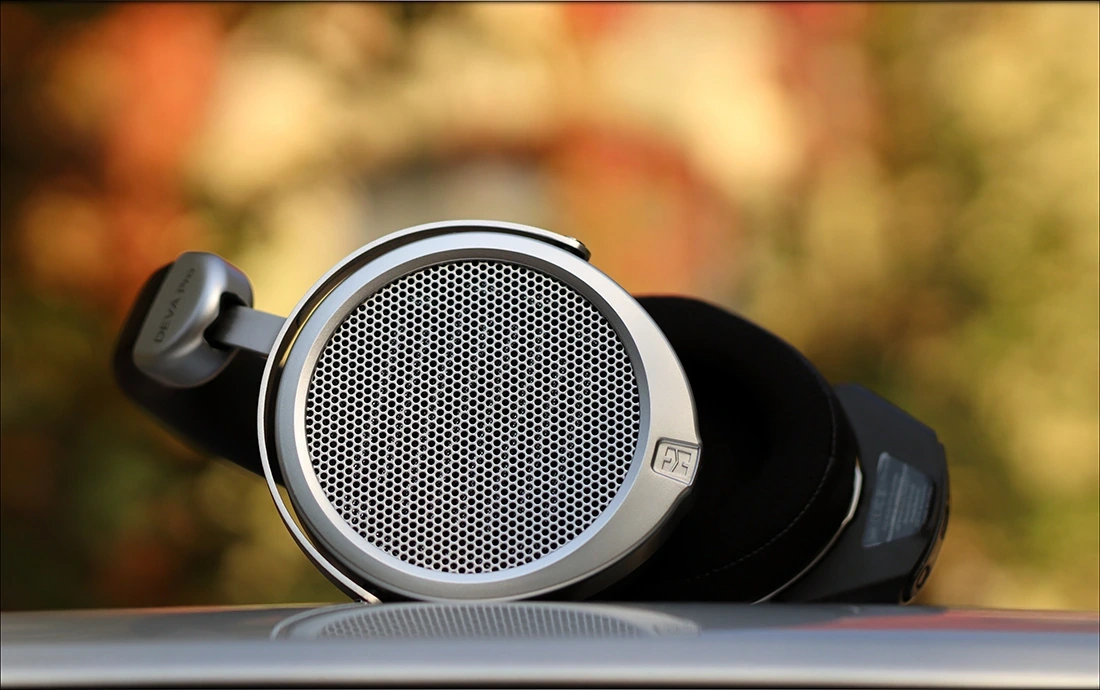
Introduction
HIFIMAN is a large company from China, and they are one of those unique companies with personality, excellent warranty and customer support policy. Despite there being old and well established companies like Sennheiser, Beyerdynamic, Denon, FiiO who are unable to offer proper customer support if you purchase their products directly from them (you need to get them locally for support), there are also companies like HIFIMAN who love to be there for you. There have been some times in the past when warranty was slightly complicated for HIFIMAN too, but as they grew, they can now offer the level of support expected when purchasing a high-end flagship headphone. If you ever happen to reach a point where you will need warranty, you will be directed to sending the headphone to an easily reachable address, and you will receive a replacement really quickly, the turnaround time for most clients having been about 2-4 weeks so far.
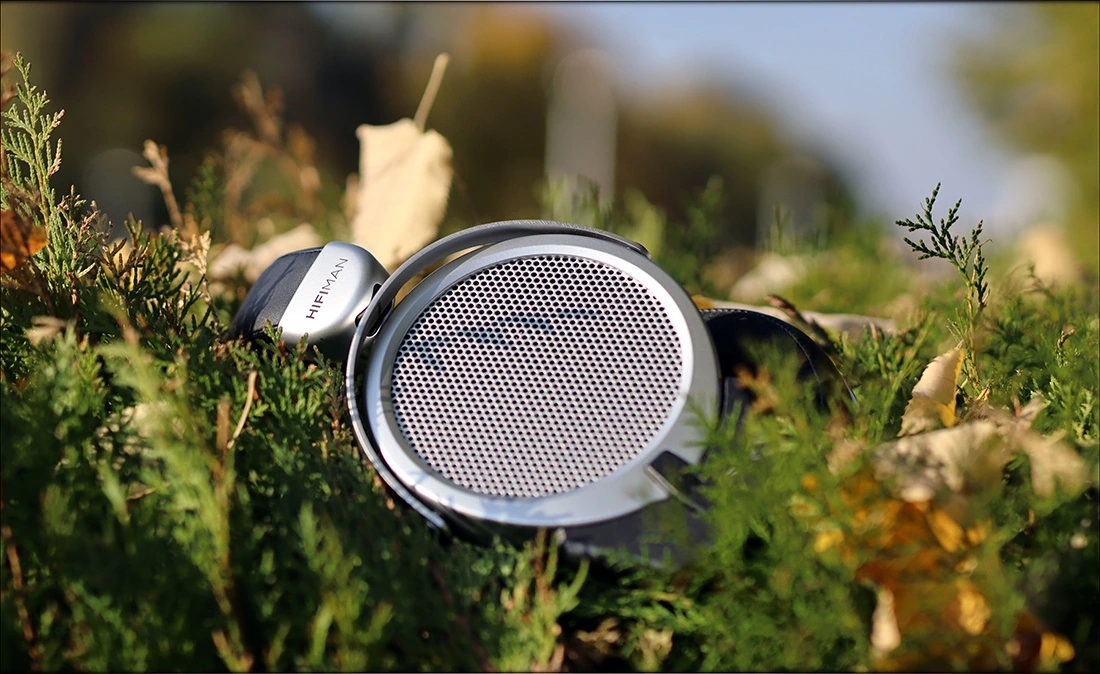
It should be noted that I have absolutely no affiliation with HIFIMAN, I am not receiving any incentive for this review or to sweeten things out. I’d like to thank HIFIMAN for providing the sample for this review. Every opinion expressed is mine and I stand by it. The purpose of this review is to help those interested in HIFIMAN Deva Pro find their next music companion.
Product Link
You can grab one from www.amazon.com here: https://amzn.to/3CMwpkF
If you’re in the UK, you can grab one from www.amazon.co.uk here: https://amzn.to/3mLVHKs
And if you’re from Europe, you can grab one from www.amazon.de here: https://amzn.to/3wpN0IY
Packaging
First things first, let’s get the packaging out of the way:
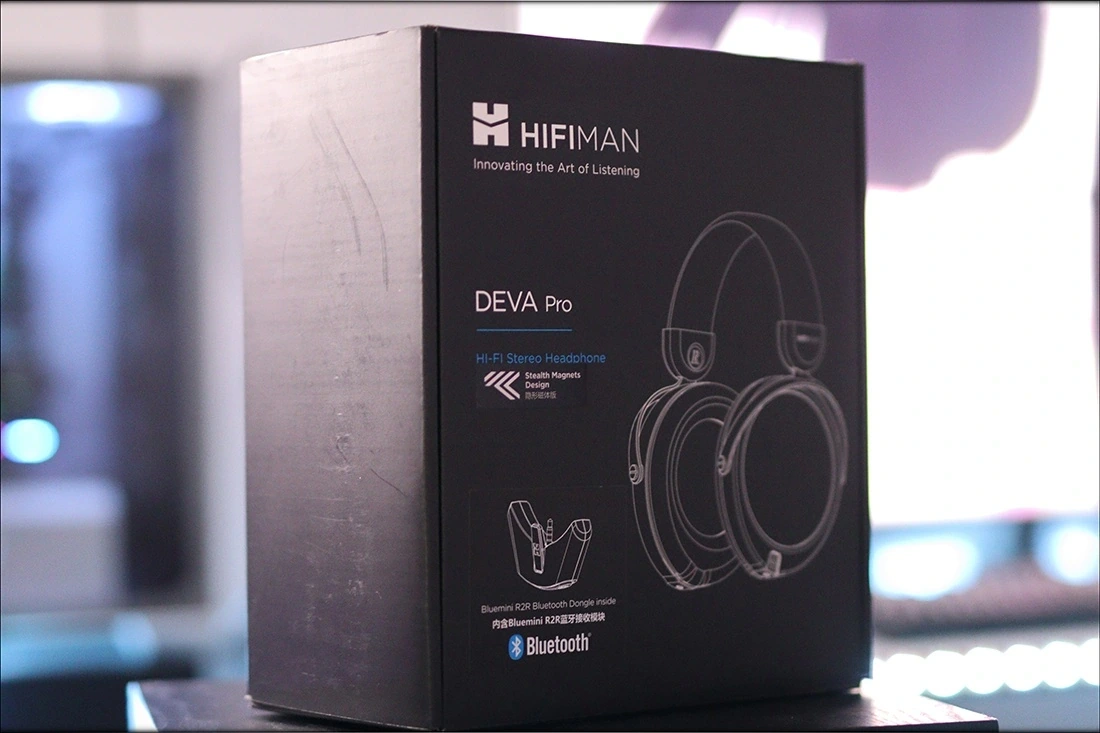
I like the fact that HIFIMAN didn’t cheap on the package of Deva PRO, compared to the package of the original Deva.
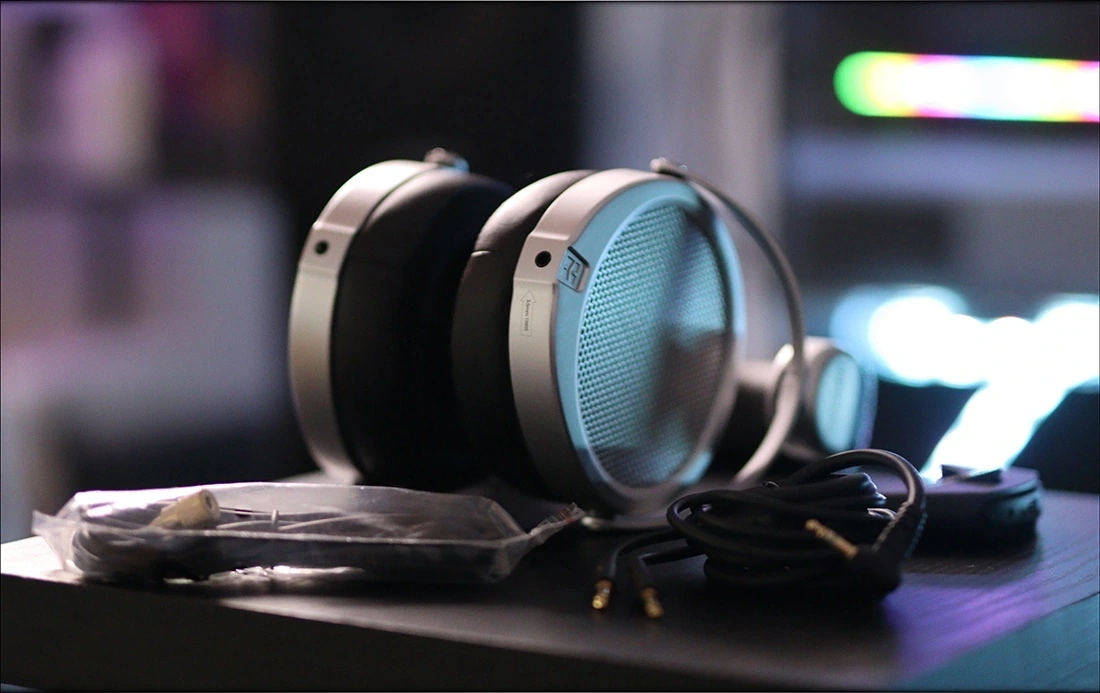
In fact, they include all of the basic necessities for using Deva PRO, the Bluemini R2R Himalaya Bluetooth receiver, cables to use them wired, charging cable for the mini bluetooth receiver, and crispy paperwork. The headphones are also seated and presented nicely, in a silk-like material and sponge to keep them safe.
Build Quality/Aesthetics/Fit/Comfort
Deva PRO is a whole new level of headphone, planar magnetic and bluetooth enabled, better than the original Deva, and surely better than the HE400SE and Sundara it is made to compete with. In fact, throughout the entire midrange category, no headphone comes with a bluetooth amplifier as good as Deva PRO. As we will see, this also leads to a disadvantage with Deva PRO, but first, let’s explore the headphones.
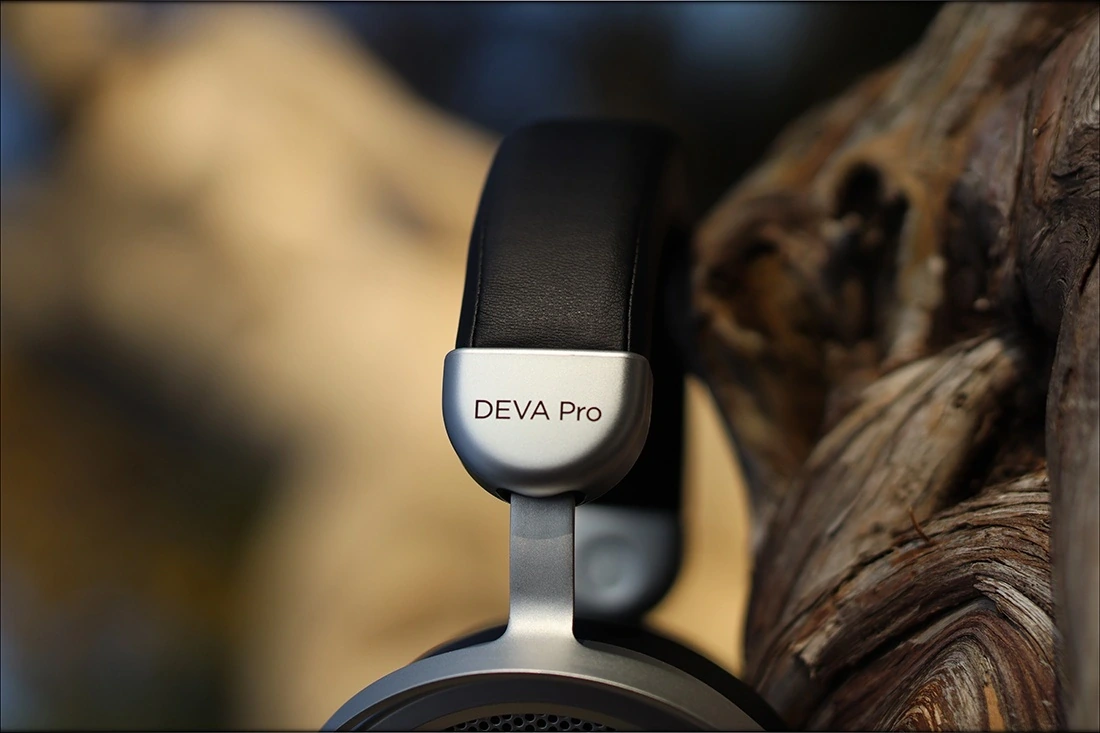
HIFIMAN went with a more color neutral approach for Deva PRO, with a silver and black color scheme, making Deva PRO sleeker and more elegant than the original Deva. They also made Deva PRO better built than the original Deva, and where the original felt a bit plasticky, the PRO variant feels full metallic and better built. HIFIMAN didn’t change the overall specifications, and both have an 18 OHM impedance, along with an extremely low SPL of 93.5 dB, making both the original Deva and Deva PRO hard to drive. The Bluetooth connection stability of the Bluemini is excellent, to the point where doing my usual test, placing the smartphone in a backpack, and covering it in a few blankets, or palming it, results in still a strong connection.
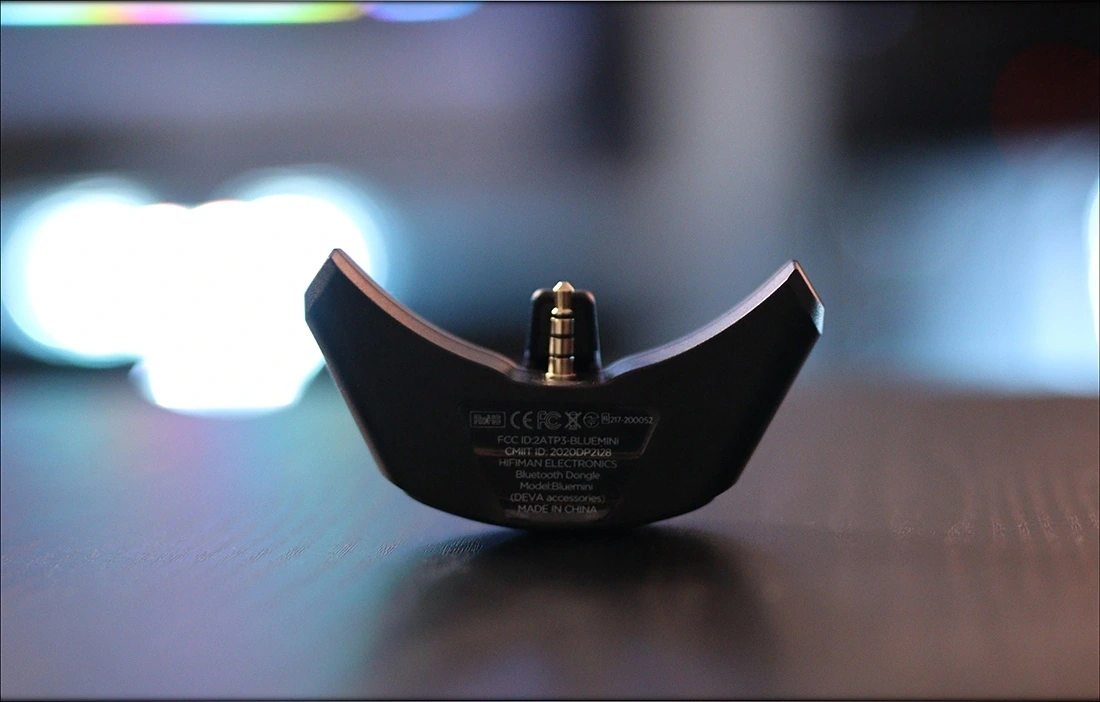
Both the original and the new Deva PRO have support for LDAC, aptX HD, aptX, AAC and SBC, but the new Himalaya Bluemini R2R Receiver has vastly better overall specifications than the original Bluemini. We’re talking about a -120dB SNR for the DAC, a THD of 0.0022, and an energy efficiency of 20mW. What this means is that the new Bluemini R2R consumes very little, brings very clean and clear sound, and has the same shape and ergonomics as the original bluemini. For phone calls, Bluemini has a background hiss that’s audible sometimes, and you can use the button to end a call, for pressing play or pause during song playback. The same hiss is audible while the turn on / turn off voice speaks, but it is not audible during music playback at all, Bluemini being not only perfectly capable of driving Deva PRO but having extremely low noise, great control and overall sonic quality.
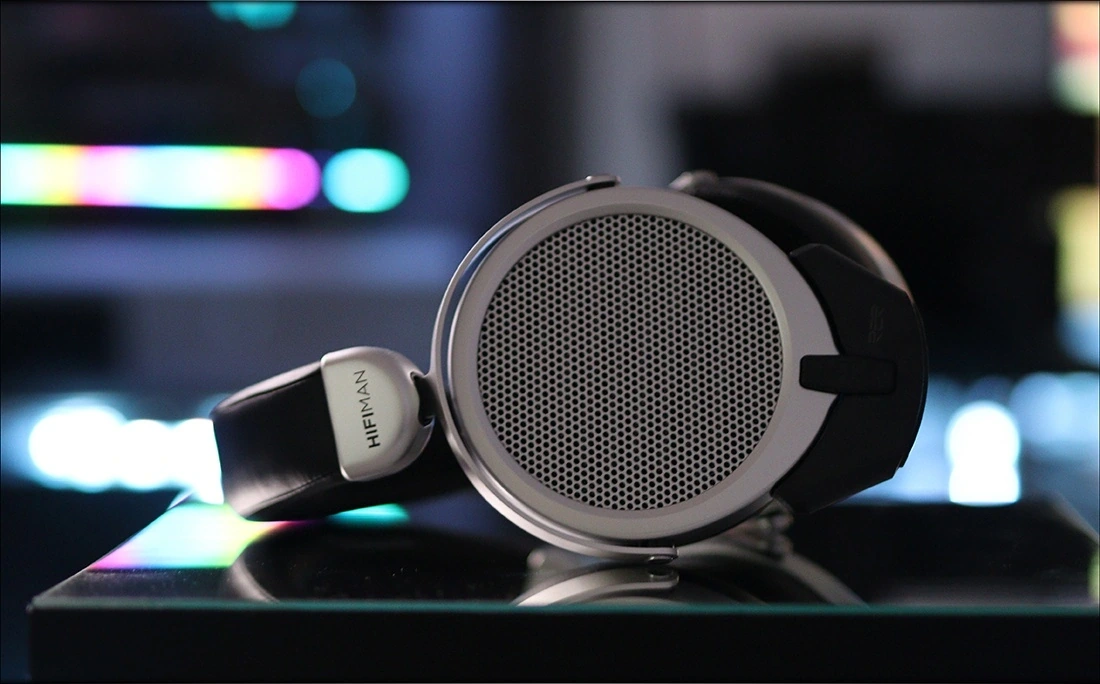
HIFIMAN kept the USB DAC function for the Himalaya Bluemini R2R, and we can still use it cabled, via Bluetooth to power Deva PRO, and Deva PRO can take both two TRS 3.5mm cables, or one TRRS 3.5mm cable in its left earcup (this is extremely rare though, you’ll need a custom 3.5mm TRRS cable made for them). The new R2R Bluemini also has exceptional battery life, of about 8 hours on paper and 6 hours tested by me, at loud to very loud volumes, aptX, LDAC, and some phone talk. The new blue mini module has a microphone as well, and it can be used to take phone calls, having one of the best phone qualities for the microphone, although it doesn’t have a good noise cancelling algorithm, so wind noise will be audible. Deva PRO being open, I suspect you won’t be using them where there’s windy weather or lots of noise anyways. The R2R Bluemini Receiver always runs in balanced TRRS 3.5mm, and you need to make sure that you always connect it to the left earcup, otherwise you might short it out.
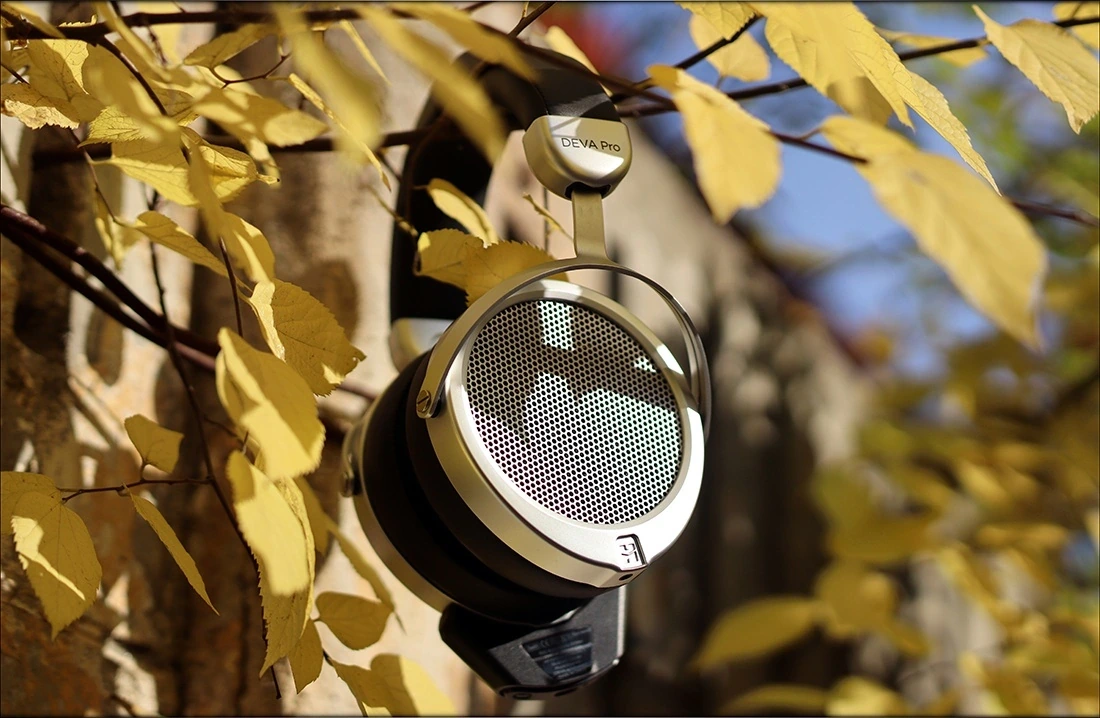
At the headphone level, Deva PRO is extremely comfortable, lightweight, and a pleasure to wear. They are lighter than most flagships, lighter than Audeze LCD-2C, lighter than Verum One MK2, and they’re as comfortable as the original Deva, more comfortable than Sundara. The only headphone I reviewed that is more comfortable than Deva PRO by a good margin is HIFIMAN’s Arya Stealth, which has larger earpads, slightly less clamping force, and a looser fit. The normal cable for using them is flexible, and of a really good quality. Feels more reliable than the cable that HE400SE comes with.
The review has the word Stealth in the title, because Deva PRO uses the new HIFIMAN Technology for their drivers, also seen in my review of the HIFIMAN Arya Stealth, technology which makes the magnets invisible to sound. Basically, the new way the magnets are designed allows for sonic waves to pass through them without generating interference, leading to a more clean overall sound. We will see below if it works as intended, in the sound quality part of today’s review.
Sound Quality
I usually leave the pairings part of a review for the Build Quality, or I make a different part about pairing, but HIFIMAN Deva PRO is unique in this aspect, as it comes with the Bluemini that it is supposed to be used with. This means both that it sounds quite great with it, but also that you may end up always using it wireless. Even using high-end DAPs like iBasso DX300, Astell & Kern SE180, Lotoo PAW 6000 and Desktop sources like Cyrus One Cast and Violectric HPA V340, I still find the Bluemini enjoyable, and almost in line with all the other high-end sources. HIFIMAN really optimised the bluetooth receiver to give an impressive sonic performance with Deva PRO, and they didn’t fail to deliver. Deva PRO is hard to drive and needs high-end sources to sound their best. No smartphone will be able to drive it properly, and most entry-level portables as well as smartphones won’t get them very loud.
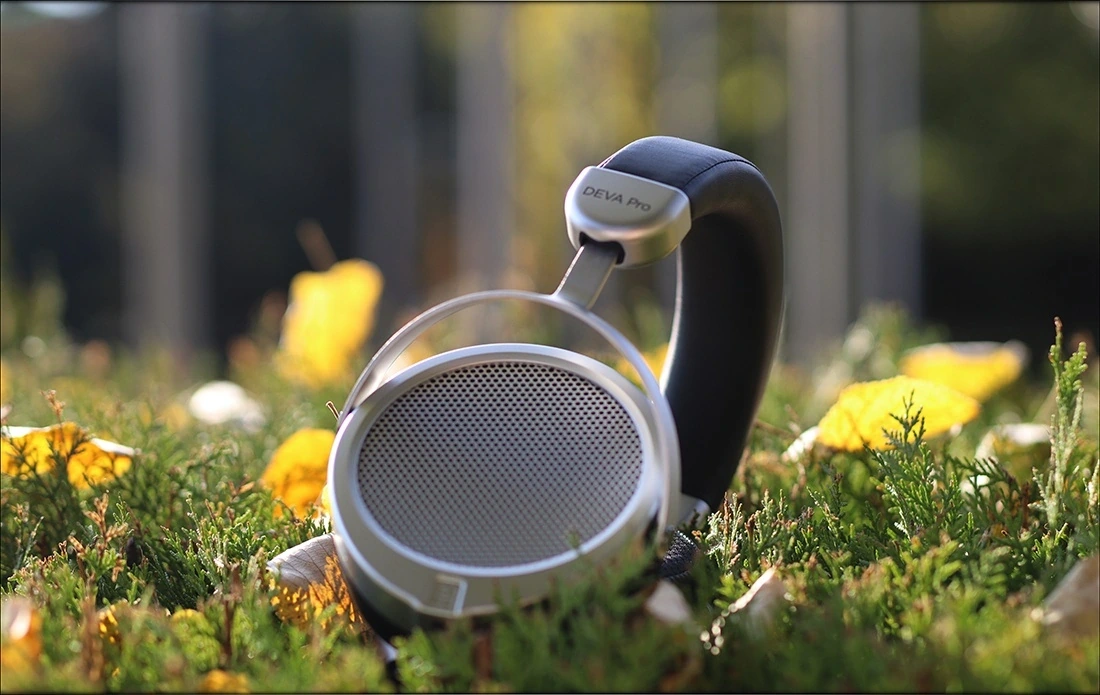
With all of that out of the way, I’ve used DAPs and high-end sources half of the time, and the Bluemini half of the time for taking the sound quality notes, and to keep things fair. The overall sonic presentation can be described as lightweight, impactful, wide and well separated, neutral-natural in tuning, with great extension in both the treble and the bass, and with an amount of warmth in the midrange.
The bass of HIFIMAN Deva PRO is actually better than that of the original, with a better sub bass extension, hit and impact. The overall bass is more nuanced and fuller, but it doesn’t feel much higher in quantity per se, so the total overall tonal balance is similar to the one we’ve seen with Deva. It is much better than the bass found on HIFIMAN Sundara and HE400SE, and higher in quantity as well. The upper bass is more enhanced on the original Deva, and it feels natural on Deva PRO, with some extra body and thickness for all instruments, but without the upper bass coloring the mids.
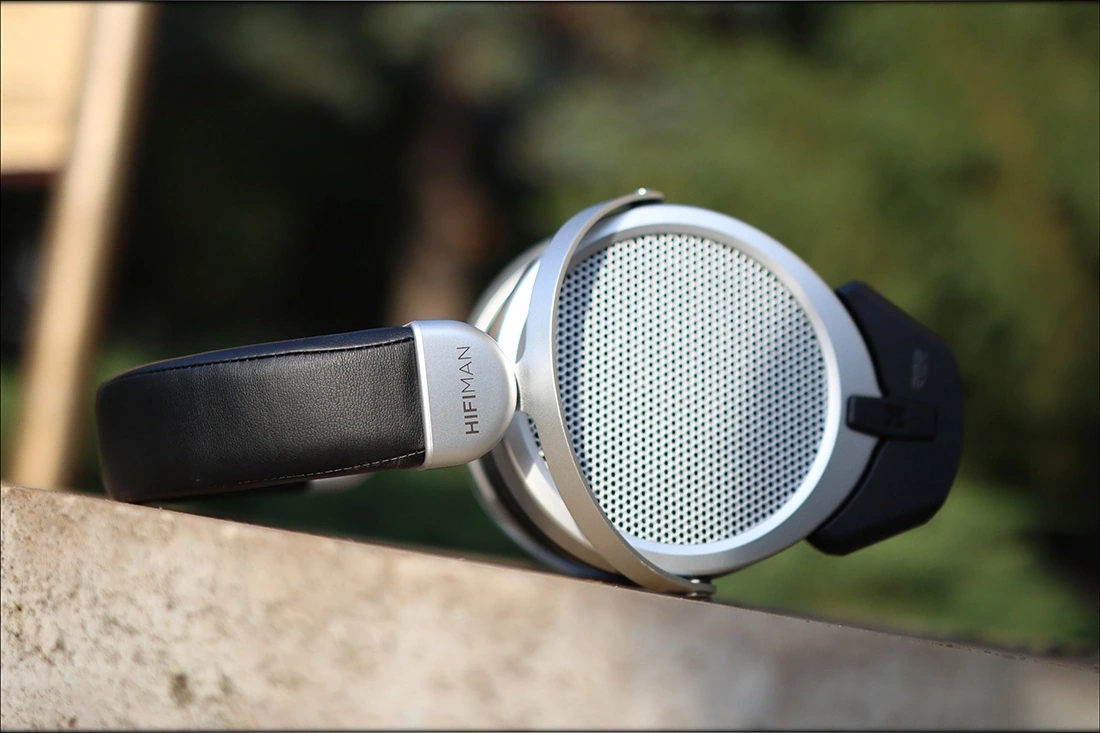
In fact, the midrange of Deva PRO is quite neutral, clean and detailed, with a good amount of impact and width. Deva PRO is right behind HIFIMAN Arya Stealth, and it is currently one of the most open sounding headphones out there, and the widest sounding one among its price class (350 USD). Imaging and detail are also great, I can notice details with Deva PRO that I usually am only able to notice with high-end flagships. The thing here is that Deva PRO is not analytical, but musical and natural, so you never have to worry about the sound being too harsh. They are quite forgiving in fact, and Deva PRO is made for enjoyment not for music work.
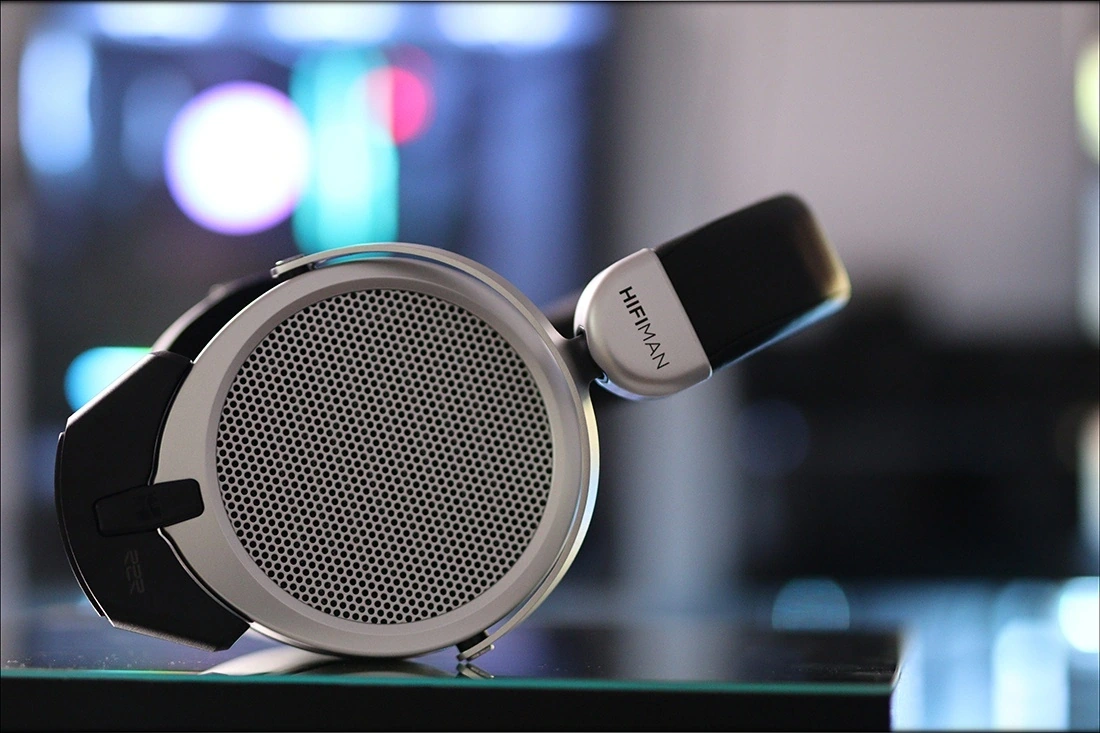
The treble is forgiving, well extended, slightly bright in tonality, and also natural in texture. This means that there is a good amount of treble, and it can be enough for some to call the sound bright, but it is never harsh, and the natural texture means that all instruments, cymbals, everything sounds as it sounds naturally, without euphemisms or added aggressivity.
Comparisons
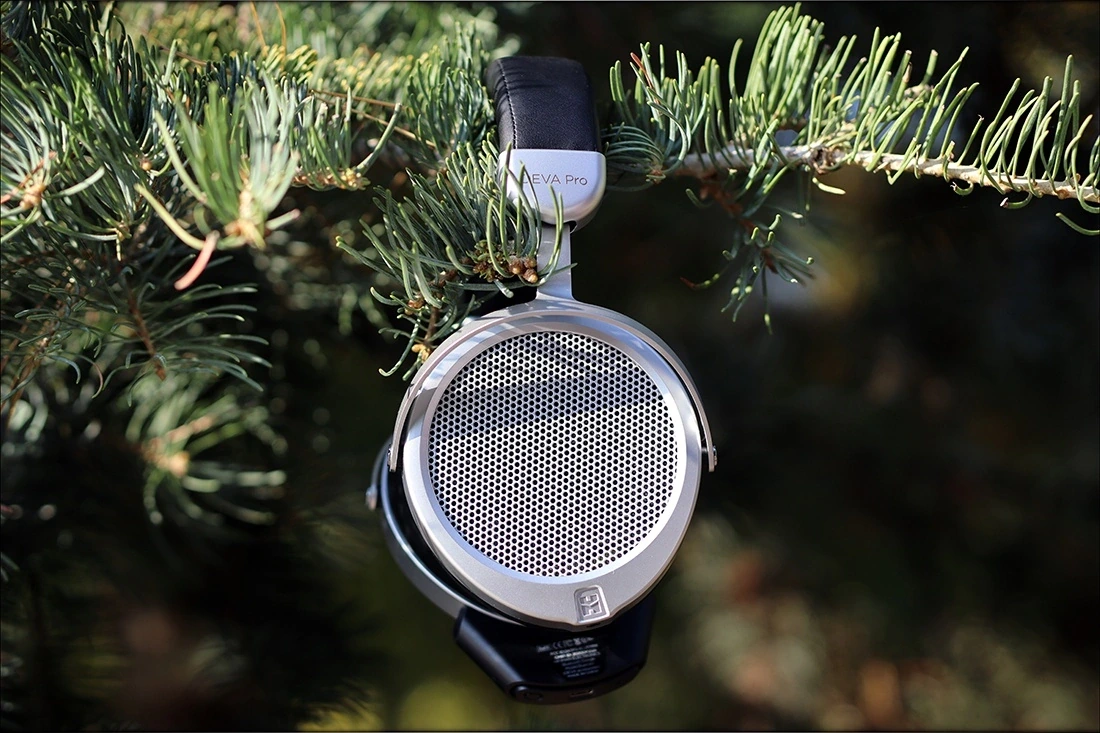
HIFIMAN Deva PRO vs Avantone Pro Planar (330 USD vs 450 USD) – We have a monitor, that is more expensive than Deva PRO, against a bluetooth headphone, but both are planars and both are open back. In fact, the entire comparisons part has only open back headphones, to avoid unfair comparisons. The overall comfort is similar, with Avantone PRO Planar being heavier, but still having large pads and good comfort, except for when walking where Deva PRO is more stable. The sound is thicker, warmer, smoother and more punchy, with more bass on Avantone PRO Planar, while Deva PRO has more dynamics, is more airy, wider, with more instrument separation, with a lighter and snappier sound. Avantone PRO Planar is more forgiving than Deva PRO and needs some boost in the highs to match Deva PRO’s sound that has more treble and less bass.
HIFIMAN Deva PRO vs Verum One MK2 (330 USD vs 300 USD) – Verum One MK2 is an ironic situation, it is so easy to drive, having a low impedance, that some sources can struggle to keep them going. Verum One is heavier, and sits tighter on the head. By comparison, Deva PRO sounds more open, it is wider, has more instrument separation, and is more warm in the midrange. Verum One the second sounds more neutral, with less emphasis on bass, and a more bright treble, they both have great detail and extension, but Deva PRO is more musical, more warm and easier to listen to, with a smoother treble, where Verum One MK2 is more neutral, cleaner, but has less bass quantity and reveals the bad side in poor recordings easier than Deva PRO, which can be more forgiving.
HIFIMAN Deva PRO vs Harmonicdyne Zeus (330 USD vs 350 USD) – Zeus doesn’t come with a driving receiver, so you will need something to drive it, and it won’t be any luck if you’re a smartphone kind of guy either, as Zeus eats a lot of power. If both are driven well, Zeus will sound thicker, warmer, and more bassy, with a more intimate and focused soundstage. By comparison, Deva sounds more open, wider in the soundstage, with more detail, it is cleaner and generally much more enjoyable with atmospheric music. Zeus sounds more forward and direct. The treble has better extension and is more airy on HIFIMAN Deva PRO, but it is smoother on Zeus. Deva PRO sounds more neutral, which can make music brighter, but also reveals more detail in the bass, where Deva PRO has more nuance.
Value and Conclusion
All in all, Deva PRO has one of the best values for a mid range headphone I’ve seen to date. The headphone itself is amazingly comfortable, sounds great, and comes with a bluetooth receiver that’s actually as capable to drive them as most high-end flagship players or high-end desktop amplifiers. This makes Deva far better than most competitors, and gives it a full edge for portability, although the open-back design takes some of that portability away from it and shifts the focus to the sonics.
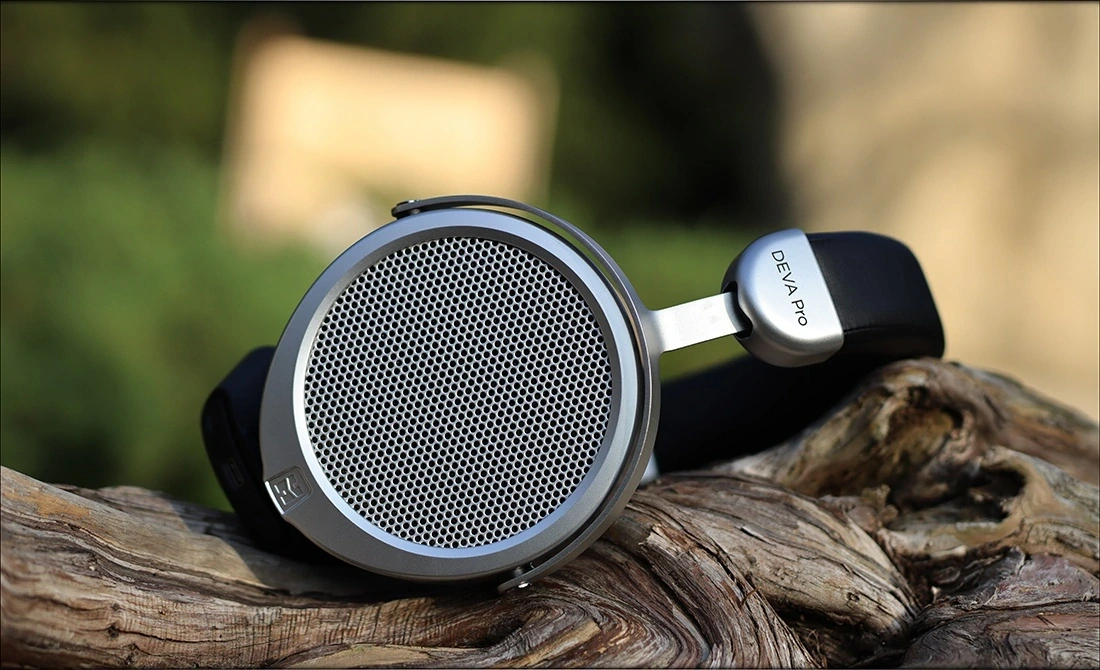
Speaking of the sonics, Deva is one wide sounding, warm, detailed, clean and sparkly headphone, to the point where I have to add it to Audiophile-Heaven’s Hall Of Fame, as one of the best headphones I reviewed to date for around 350 USD.
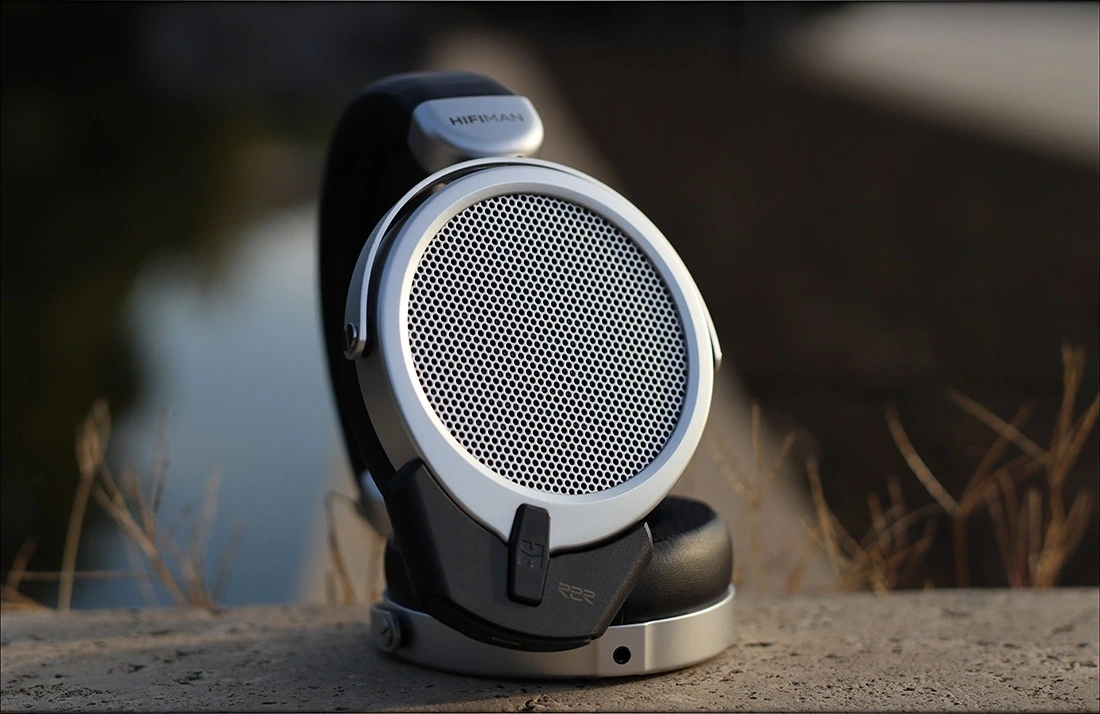
At the end of today’s review, if you ever found yourself frustrated with planar magnetic headphone for their hard to drive nature, if you don’t want to invest in a cumbersome audiophile setup, but if you still want that audiophile wide, atmospheric sound with a deep bass, clean treble, detailed midrange and musical signature, HIFIMAN Deva PRO Planar Magnetic Headphones are easily ones of the easiest to recommend out there.
Product Link
You can grab one from www.amazon.com here: https://amzn.to/3CMwpkF
If you’re in the UK, you can grab one from www.amazon.co.uk here: https://amzn.to/3mLVHKs
And if you’re from Europe, you can grab one from www.amazon.de here: https://amzn.to/3wpN0IY
--- Please remember to stay safe, and always have fun while listening to music!---
- If you have a dime to spare, please donate, and help us! It would make the day brighter for me and my wife-
Full Playlist used for this review
We listened to more songs than those named in this playlist, but those are excellent for identifying a sonic signature. I recommend trying most of the songs from this playlist, especially if you’re searching for new music! The playlists are different for Spotify, Tidal and Youtube, and based on the songs I enjoy and are available on each!
https://www.youtube.com/playlist?list=PL_cjBXGmwSHSdGcwuc_bKbBDGHL4QvYBu
https://open.spotify.com/playlist/5J3oloz8Riy9LxEGenOjQ0?si=979ba4f082414be7
https://tidal.com/browse/playlist/330fd544-8e5b-4839-bd35-676b2edbb3d5
--- Contact Us ---






[…] 4 Wireless to Master & Dynamic MW65 (500 USD), AIAIAI TMA-2 Studio Wireless+ (350 USD), and HIFIMAN Deva PRO (330 […]
Hi, am using Meze 99 Classics and i need an upgrade basically in terms of sound quality, clarity and details. Before that I was using Beyerdynamics DT 880 250 ohms studio headphones with Xduoo xd-05 dac/amp. But i couldn’t use it more than an hour as am sensitive to trebles to an extent i got headaches.
I sold it and took Meze 99 Classics for sound and portability.
It’s been 2 years i guess and am looking for a change. I donno how to say exactly but i need more resolving/clarity oriented better soundstage headphones but don’t need that treble sibilance once.
I have shortlisted some headphones 1) Harmonicdyne Zeus with Fiio BTR 7/ Ifi Go Blu/ Ifi Hip DAC V2.
2) Hifiman Deva Pro with that Bluetooth R2R dongle and something like btr7 or go Blu.
Portability is a main factor and i can’t sit at one place and listen so no standalone desktop dac/amp
Amazing work, thank you so much for the review!
Hello Allan,
You rate the Verum II over the Sundara which you also rated very highly, I was suprisec to see the Sundara not compared but the Verum, do you believe the Deva Pro is now a better headphine, technically etc than the Sundara and the Verum, that’s some win at the price point
Hii,
Oh, you and Allan know each other? XD
About your question, my opinion would be that Sundara and Verum one compare too, Verum is the best of them all technically. Deva PRO is the most practical, best bass of them all. Verum has lower bass, it is brighter, and has long build times, so I can easily recommend Deva PRO to beginners, Verum is an advanced headphone made for those who are really serious about this hobby.
The bluemini is not good at all. The static is there always. Maybe you dont noticed it but it is there when you listen music and you can hear it when you turn down volume. Listening to audibles is impossible. Every bluetooth headphone on the plant does a better job than the bluemini.
Ah, I see. I could notice it, but I am listening loud usually, so I am less sensitive to hiss and background noise than most users
Hi, what I don’t read often (if at all) is latency delay on bluetooth, on the Deva Pro it stands out like a sore thumb, I’m trying to get a comparison of the Deva (non-pro) to see if it’s latency is the same, better or worse.
You simply can’t have latency issues in a i.e. recording studio situation when recording back with tracks, that’s disappointing with the Pro as it (was) perfect for late night recording sessions without the noise factor of studio speakers.
Hiii Allan,
Usually, if you need low latency, you need to use aptX LL, but even then, it is not quite as quick as wired, or a trained ear can notice the differences in timing.
I would suggest using cables and a modest source instead, pretty much anything with Bluetooth has a certain degree of latency, if you need absolutely perfect timing, it probably still won’t fit your needs.
As far as I know neither Deva PRO doesn’t have aptX LL or Low Latency, nor the original Deva…